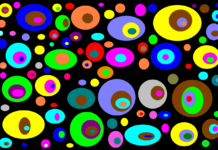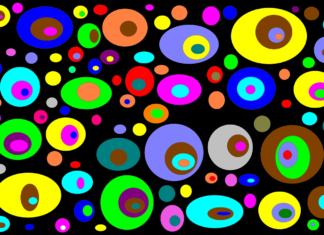Despite its name, UX design is about a lot more than creativity or artistic choices. User experience (UX) encompasses everything from the functionality of a website to its look and layout, marketing, branding, and more.
UX design is a crucial part of any project as it will often decide a customer’s first impression of the business and how they’ll interact with the brand. This can make or break whether visitors become paying clients or decide to go with another company.
With such high stakes, most companies decide to use a professional team to create their UX design. But there are a lot of choices out there when it comes to agencies. And it’s not a decision that should be made lightly. It’s best to compare the pros and cons of each to make an informed decision about what agency to go with.
Finding the Right Fit
Just because a UX design agency is good at what they do does not necessarily mean they’ll be a good fit for your company. Depending on the needs of your specific customers, industry, and the particular project, there will be certain factors you’ll want to look for to find someone who will understand the project’s goals and execute them properly.
The best UX designers will be willing and open to listening to ideas and driven enough to research independently. They’ll support shared goals but won’t be afraid to speak up if something the company asks for isn’t doable and be ready to adapt ideas into more realistic or usable versions. They’ll be innovative and creative but also inspired about the project and motivated to get it done right.
But how do you ensure that the designer you choose will check all these boxes? Or that a good professional relationship will be built? You can take a few steps to make comparing agencies and picking the right one much more accessible.
Create Clear Goals
Having no clear end goal is an excellent way to get people off track. Therefore, one of the first steps of the process should be making sure that main ideas are appropriately communicated and understood. What is trying to be achieved with this project, and what are the stipulations? Or, in other words: What is the problem that is trying to be solved for users by making this design, and what are the challenges that must be overcome to do so?
This will include the concept and a clear brief of the project and any constraints such as budget and timeline. At this point, the target audience and goal should be defined and what facets of the projects are must-haves and which can be compromised. These details will help narrow down the possibilities considerably as agencies may give quotes for project timelines that are too long or estimates that are too high for the budget.
Compare Portfolio Samples
Once you’ve found a few agencies that can reasonably fulfill your request, it’s time to see who is most suitable for the job. A design agency’s portfolio is—in many ways—like their resume, showcasing past projects to give an idea of what they can do. As you take a look, try not to be distracted simply by attractive or innovative designs. Instead, pay attention to those that have similarities to the project at hand. Suppose you’re looking for a particular feature, for instance. In that case, you’ll want to see whether agencies have proof of implementing that feature before and find those who are the most experienced in the specific components you want.
Be wary of those portfolios that seem too similar or which use templates. The more distinct and varied the projects are in a portfolio, the better. It shows that the agency is innovative and creative and will take on every project as its entity rather than using cookie-cutter techniques. UX design, after all, is about standing out, so the last thing you want is to look like dozens of other companies. Â
References
Of course, a design agency will always put its best foot forward in its portfolio to have a biased view of its work. To better understand, it’s a good idea to reach out to others who have used their services or look for reviews and references. You can even ask for these directly from the company, although those posted independently are more likely to be unbiased.
If an agency refuses to submit references, it may mean they don’t have satisfied customers, or at least not enough to name on a whim. This is a red flag.
Ask Questions
Once you understand what a team can do, ask the agency questions about their work to see how passionate and knowledgeable they are about their industry. For instance, you can ask about the particular design by inquiring: “What features do you think will be most important for users?”. Or you could pose more general questions such as: “What do you feel is the most important aspect of the design process and why?” A company should be able to explain why they make confident choices and be willing to talk through their process.
Outline Expectations
Once you’ve found a few talented agencies that seem to be what you’re looking for, it’s time to find out about their design process. Most UX companies will provide this information to you when you reach out, describing their steps for turning a concept into a final product. This will help prepare you for what’s to come and what requirements will be needed while also setting up expectations. This will also define what it is you’re paying for. An evolving experience design agency covers a mix of user experience, product and service design.
You’ll want to understand how often you’ll get updates from the company about the project. A good agency usually has particular milestones for checking in with a company about completing tasks or sending over prototypes and reports. A defined schedule will show that the company is organized and professional but will also prevent any surprises. Ask the agency how frequently they communicate with their clients during the design process. If they don’t check in often, there will be no way of seeing how the design progresses and little opportunity to give feedback.
Explore Available Resources
When comparing several good choices, it may come down to what other resources they can offer. Some UX design agencies can help with UX and user research, content strategies, workflows, and other aspects that can help with productivity in the overall company.
Ask whether the available professionals have any experience in these areas. You may find that one can help in one place and one can help in another. Then you can decide which facet is more important to the company. For instance, if your goals are mainly driven by gaining users or increasing traffic, you may want a team to help with user research.
The Bottom Line
Although there are a plethora of UX design companies, not all of them are created equal. Finding an agency or professional who both understands and can achieve the desired result can be a time-consuming and stressful process. But by looking at their portfolio, researching their references, and discussing their specific offerings and strategy, the decision should become much more straightforward. The best choice will be someone who will not only be a good fit for the current project but someone who you could see working with in the future. A good UX designer should be a partner rather than a one-time hire and should be willing to stick around to help with future updates and edits.






















